The content of the article
With the onset of spring warmth on many trunks of deciduous trees, butterflies of a bright orange color, resembling hives, are noticeable: the same brick-colored wings with specks of black flowers, the same border with blue dots. And only with a careful examination are the differences visible - near the base of the wings there are fewer brown spots and less blueness. This is a multicolor belonging to the same family as the cabbage.
Description
The multicolor belongs to the nymphalid family. The winged squad. Its dimensions are average, the front wings reach a length of 30-32 millimeters, the span is about 60 millimeters. The wing is completely painted in orange tones, only at the very base the orange color is replaced by brownish. The entire surface is covered with yellow and black spots of various shapes.
Along the outer edge of the wings there is a border of stripes of black and yellow, in addition, there are blue spots that look like a crescent. The edges are uneven, wavy, some teeth protrude. The wings are brown on the back, the pattern is the same as on the tree bark. The tendrils of the black multicolors are in the form of clubs. The eyes are large, facetted, with flakes around them. The role of the mouth is performed by the proboscis, by which the butterfly drinks wood and flower nectar. Of the three pairs of legs, the front is underdeveloped, so you have to move on the surface on four legs.
Habitat
This type of butterfly is widespread in the central and eastern regions of Europe, in the north they are up to Finland and Sweden. Individuals were brought even to the north of Africa. A lot of them are in Asia Minor, Japan and China. In Russia, there are a lot of flowering plants in Siberia, in the Far East in the Amur and Primorye regions.
They prefer to live in forests among deciduous trees and shrubs, fly along the edges, along roads, and in cities they live in garden and forest park areas. You can also meet in the mountains to a level of 1,500 meters.
Breeding
Two weeks later, brown-gray caterpillars with a large black head about 2 millimeters long emerge from the eggs. The brood gathers together, makes a nest from the leaves, entangles it with a web that the caterpillars themselves produce, and they live in it for about a month as a colony, gnawing the leaves, berries and buds of apple trees, poplars, birches, willows and other plantings. In private orchards and orchards, fruit trees are often inflicted considerable damage, because the leaves and fruits remain nibbled and spoiled.
After 30 days, the caterpillar becomes developed, stretches up to 45 millimeters. Basically, it is black and bluish in color with orange stripes running along the back and sides. The body and part of the head are covered with warts. The caterpillars of this particular species are distinguished by long, rather sharp branched spikes. To a careless gardener, they can pierce the skin and cause allergies.
Caterpillars live in one colony until pupation begins. Before the next stage of their development, they leave the plant on which they lived. Pupae of 25 mm hang upside down and hang from one to two weeks. Pupae red-brown with yellow or metal spots. In the early days of June, young adults appear, and for some time they fly with butterflies from last year's brood.
Lifestyle
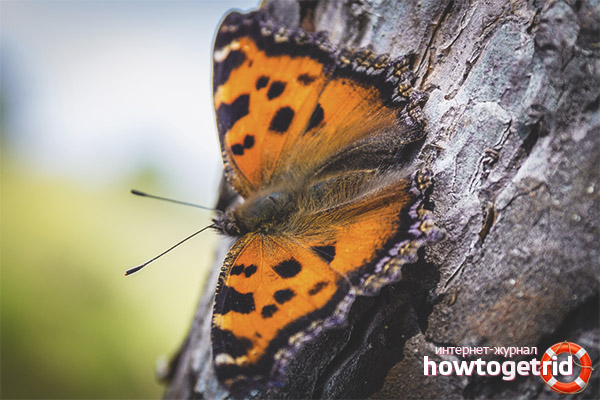
After pumping out, the multiflora is not as active as most butterflies. Even more so - they show very little activity. They look for a nook on the tree, merge with the bark - good, the color allows, and spend in a state of numbness for a long time until the autumn coolness comes. In the fall they go out of their stupor, they look for fruits (sometimes even fallen to the ground), are reinforced with juice. On fine sunny days, they can travel long distances, seeking food. With the advent of cold weather, they hibernate until the month of April. They prefer wintering, climbing under the tree bark, hollow in the trees, crevices of buildings. In the presence of buildings winter. If there are buildings nearby - they hibernate in attic rooms or look for secluded places in boards stacked in stacks.
The multi-flowered flowers prepared for winter sleep have a plump, bulging abdomen, which stores winter supplies that will help to survive the numbness.
Nutrition
They like to drink juice flowing from damaged trees - birches, oaks, willows, fruit trees. Sometimes they feed on flower nectar. Do not disdain animal excrement, sometimes multi-flower can be found even near the corpses of some animals.
Video: Butterfly multiflorum (Nymphalis polychloros)

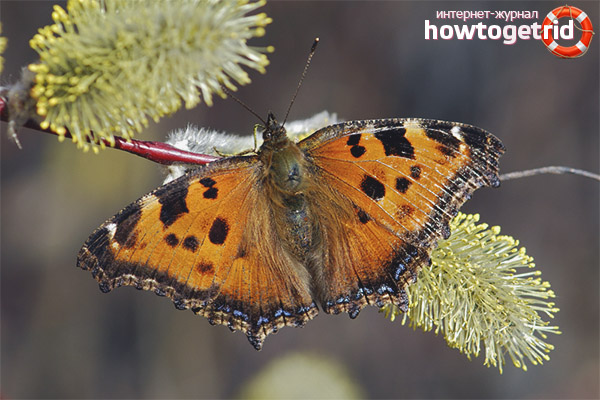
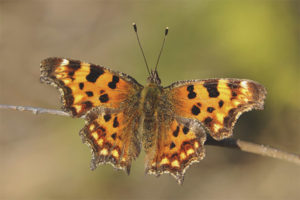

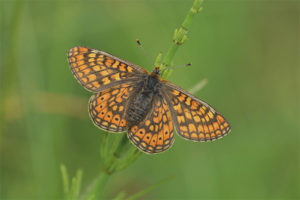
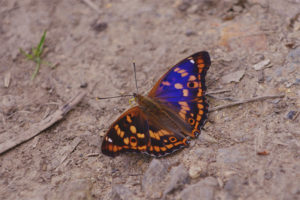

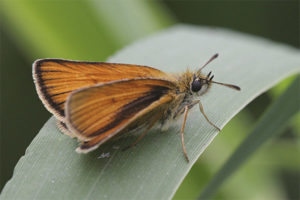
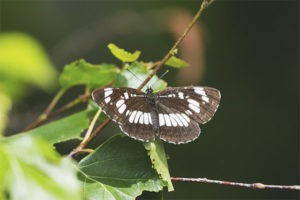
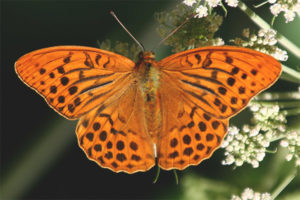
Submit